|
Progressive Men of Minnesota
Minneapolis Journal
1897
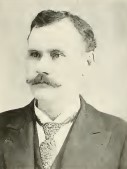 LOUIS EDWARD GOSSMAN is descended from a line
of patriots who served their country with fidelity in
the War of the Revolution. He was born in Burr Oak
township, Winnesheik County, Iowa, December 3, 1864. His
father was Anthony Gossman, a native of Morgan County,
Ohio, where he resided until 1859. He then removed to
Iowa and lived there on a farm till 1894, when he
retired from farming and took up his residence in
Canton, Minnesota. He is in comfortable financial
circumstances, having made a success at farming. His
wife’s maiden name was Elizabeth Snyder who was born in
Perry County, Ohio. Louis Edward’s grandparents on his
father’s side came to this country from Baden, Germany,
when quite young, locating first in Pennsylvania, then
in Morgan County, Ohio. On his mother’s side, his
grandparents were natives of Pennsylvania. Nicholas
Snyder, his mother’s paternal grandfather, came from
Mayence, Germany, about 1778, at the age of fourteen
years. He
was brought to America by other Germans, who came over
to assist in the cause of the Colonies. He joined
Washington’s army in Pennsylvania as a drummer boy and
served to the end of the war. After the war he returned
to his native country, but came over again in a few
years and settled in Pennsylvania. LOUIS EDWARD GOSSMAN is descended from a line
of patriots who served their country with fidelity in
the War of the Revolution. He was born in Burr Oak
township, Winnesheik County, Iowa, December 3, 1864. His
father was Anthony Gossman, a native of Morgan County,
Ohio, where he resided until 1859. He then removed to
Iowa and lived there on a farm till 1894, when he
retired from farming and took up his residence in
Canton, Minnesota. He is in comfortable financial
circumstances, having made a success at farming. His
wife’s maiden name was Elizabeth Snyder who was born in
Perry County, Ohio. Louis Edward’s grandparents on his
father’s side came to this country from Baden, Germany,
when quite young, locating first in Pennsylvania, then
in Morgan County, Ohio. On his mother’s side, his
grandparents were natives of Pennsylvania. Nicholas
Snyder, his mother’s paternal grandfather, came from
Mayence, Germany, about 1778, at the age of fourteen
years. He
was brought to America by other Germans, who came over
to assist in the cause of the Colonies. He joined
Washington’s army in Pennsylvania as a drummer boy and
served to the end of the war. After the war he returned
to his native country, but came over again in a few
years and settled in Pennsylvania.
Louis Edward, the third in a
family of eight, was brought up on a farm, and attended
the country school in the winter as other farmers’ boys
do. During the winter of 1880 and 1881 he attended
school at St. Joseph’s College, Dubuque, Iowa, and
during the winters of 1881-82, 1882-83 and 1884-85
attended school at the Decorah Institute, Decorah, Iowa.
In the winter of 1883-84 he was engaged as a teacher at
Harmony, Minnesota. In the fall of
1885 Mr. Gossman entered the law department of the
University of Michigan, where he graduated with the
degree of LL. B. in June, 1887. Having made up his mind
to take the literary course in the university, he
entered this department in the fall of 1887, from which
he graduated in June, 1890, with the degree of B.
L.
In August, 1890 Mr. Gossman started
for Crookston, Minnesota, with the purpose of locating
there to practice law. He was admitted to the bar in
October, 1890. While for the first two years clients and
money were not abundant, Mr. Gossman having
no personal acquaintances at Crookston or influence to
assist him by perseverance and industry has built up a
fair practice and gained the confidence of the people.
In the spring of 1893 he was elected to the office of
city justice an office which he held for two years. In the fall of
1894 he was elected to the office of county attorney on
the People’s party ticket, which office he now holds.
Mr. Gossman is a member of the Catholic church, and was
married in April, 1892, at Canton, Minnesota, to Martha
A. Glenn, of Decorah, Iowa. They have two children,
Doritt and Anthony Byron.
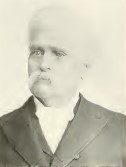 FRANCIS IVES The
subject of this sketch while an occupant of the district
bench in the Fourteenth Judicial district brought upon
himself considerable opposition by his vigorous
enforcement of the law against violators of the statutes
relating to gambling and the liquor traffic. This
opposition undertook to secure his impeachment in the
legislature of 1895, but without success. Francis Ives
was born in Orange County, Vermont, July 16, 1831, the
son of Warren and Louisa B. Ladd (Ives.) His father was
a lumber manufacturer in comfortable financial
circumstances. FRANCIS IVES The
subject of this sketch while an occupant of the district
bench in the Fourteenth Judicial district brought upon
himself considerable opposition by his vigorous
enforcement of the law against violators of the statutes
relating to gambling and the liquor traffic. This
opposition undertook to secure his impeachment in the
legislature of 1895, but without success. Francis Ives
was born in Orange County, Vermont, July 16, 1831, the
son of Warren and Louisa B. Ladd (Ives.) His father was
a lumber manufacturer in comfortable financial
circumstances.
Francis was educated in the
common schools and academies. He began the
study of law in New York in 1852 and was admitted to the
bar in 1855. He came to Minnesota in June, 1856, and
settled in Red Wing, where he practiced law until the
spring of 1859.
He then made a tour of Texas, Arizona and Mexico,
and was absent as a newspaper correspondent until the
spring of 1861. At the outbreak of the war he was on his
way home from the South. In June, 1861, he married Miss
Helen M. Many, a native of Vermont, and again located at
Red Wing for the practice of his profession. His wife
died in 1868, and in the year 1878 he removed to
Crookston, the change being made largely on account of
his failing health. The years between 1870 and 1878
spent mostly out of doors to regain health.
In his new location he formed
a partnership with John McLain, which partnership
continued until August, 1881. The firm of Ives &
McLain was, at the beginning of the last decade, one of
the best known legal firms in Northern Minnesota. After
the dissolution of the partnership, Mr. Ives continued
alone in the practice of law until 1888, when, for a
short period, he was associated with the late D. E.
Hottlestad.
In June, 1883, he was married to
Miss Cornelia E. Brigham, of Boston. Mr. Ives had
always been a republican in his early years, but in 1890
believing that the republican party was no longer in
sympathy with the political principles upon which it was
founded, he transferred his connections to what was then
known as the Alliance. In February 1891, when the
People’s party was formed, he joined that organization,
and in 1892 was nominated by it for the office of judge
of the Fourteenth Judicial District, and was elected. He
took his seat in January, 1893. He soon found several
towns in his district under the control of gamblers and
keepers of houses of ill-fame, and soon afterwards
inaugurated a movement which subsequently resulted in
the eradication of these forms of vice and crime to a
very considerable extent. This was not
accomplished, however, without vigorous opposition. The
grand jury, which met in December, 1894, having failed
to indict violators of the law, although urged to take
such actions Judge Ives denounced their course as in
violation of plain duty, and discharged them with a
reprimand.
He then directed the clerk to call another jury
for the term beginning January 15, 1895, which found
fifty-six indictments and four presentments on
practically the same evidence that was presented to the
previous jury. This vigorous action on Judge Ives part
led to the presentation of charges before the grand jury
and proceedings of impeachment, but the legislature
declined to sustain the charges. As the result of his
vindication, much more wholesome respect for law and the
better observance of its requirements has been the rule
in that district ever since. Judge Ives has
one child living, the son of his first wife, Harry E.
Ives, who now resides at St.,
Hilaire.
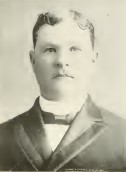 ALEXANDER
McKINNON is a resident of Crookston, Minnesota, and
engaged in the real estate and insurance business. He is
the son of Archibald and Jennette McGillis Mckinnon,
both of whom were born in Scotland. They moved to
America and settled on a farm in Ontario, Canada. ALEXANDER
McKINNON is a resident of Crookston, Minnesota, and
engaged in the real estate and insurance business. He is
the son of Archibald and Jennette McGillis Mckinnon,
both of whom were born in Scotland. They moved to
America and settled on a farm in Ontario, Canada.
Alexander McKinnon was born
March 5, 1854, at Lancaster, Glengary County, Ontario,
Canada. He only received a common school education,
leaving school in his fourteenth year. He learned the
trade of a blacksmith and the first money he ever earned
was as head blacksmith in the shop of Wilson, Van Mite
& Co., a branch of Napp, Stout & Co., in Wilson,
Wisconsin.
He remained in this position from 1875 to 1877,
working at a salary of seventy-five dollars per month
and board. He then removed to Minnesota in 1878,
residing in St. Paul for a time, but finally locating
permanently in Crookston in the fall of 1878. He had
seven hundred dollars in cash, which he had accumulated
by his own industry and economical habits, and opened a
small blacksmith shop on the site now occupied by the
McKinnon block.
He shortly afterwards associated with himself a
younger brother, Allan J. McKinnon, and continued doing
a very successful business. In May, 1880, Mr. McKinnon
associated with himself another brother, J. R. McKinnon,
in the business of manufacturing and the handling of
farm implements.
J. R. Mckinnon is his present
partner in business, the firm being known as McKinnon
Bros. They are engaged in the real estate and insurance
business. Mr. McKinnon’s business career has been a very
successful one, considering that he has had to look out
for himself since he was fourteen years of age. He is
part owner of the property known as the McKinnon Block,
in Crookston, a fine brick building, one hundred and
twenty-five by one hundred and forty feet, built in
1887, and costing seventy-five thousand dollars. He also
built and owns what is known as the I O. O. F. Block, at
a cost of forty thousand dollars in 1890. Mr. McKinnon
also owns several hundred acres of land in Polk County,
Minnesota.
In politics Mr. McKinnon is a
Democrat, and an active supporter of his party. In 1885
he was appointed postmaster at Crookston by President
Cleveland, but resigned February 14, 1890. He was
elected mayor of Crookston in April. 1890 and re-elected
without opposition in April, 1891. He was also elected
delegate to the Democratic National Convention in 1892,
and then chosen on the committee of permanent
organization, representing the State of Minnesota. He
was also nominated by the Democratic party for state
senator from his district in 1890, but was not elected.
He is a member of the Commercial Union of Crookston, and
was president of the Northern Minnesota Agricultural
Driving Association for two years. Mr. McKinnon was
married April 23, 1883, to Miss Catharine Macdonald, in
Glengary County, Ontario. They have one
child.
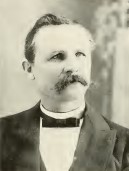 JOHN R. McKINNON The mayor of the city of
Crookston, Minnesota, is the man whose name stands at
the head of this sketch. He was born in Inverness Shire,
Scotland, September 13, 1851, the son of Archibald
McKinnon and Jennette McGillis (McKinnon), who a year or
two later emigrated to Canada, settling on a farm at
Lancaster, Glengarry County, Ontario, where they died in
moderate financial circumstances. JOHN R. McKINNON The mayor of the city of
Crookston, Minnesota, is the man whose name stands at
the head of this sketch. He was born in Inverness Shire,
Scotland, September 13, 1851, the son of Archibald
McKinnon and Jennette McGillis (McKinnon), who a year or
two later emigrated to Canada, settling on a farm at
Lancaster, Glengarry County, Ontario, where they died in
moderate financial circumstances.
John R. McKinnon only had the
advantages of a common school education, and resided on
the farm until his removal to Michigan in 1867. He
located at Crookston on May 15, 1880, two younger
brothers having preceded him to this place, and entered
into partnership with one of them, Alexander, in the
manufacture of carriages and the handling of farm
implements, under the firm name of McKinnon Bros., which
partnership still continues. Mr. McKinnon has been quite
successful in his business ventures. He is independent
in his political convictions, but has been active in
local affairs.
For six years he served as a member
of the school board, and in 1895 was elected mayor of
Crookston for a term of one year. His church connections
are with the Catholic Church. He was married June 24,
1874, to Hattie McDonald. They have had eight children,
of whom only two are living, Margaret, fourteen years of
age, and Hattie, six years of age.
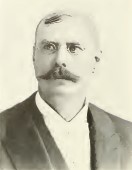 HALVOR STEENERSON, the people of Thelemarken,
Norway, are mountaineers, and are noted for their great
stature and physical strength. Halvor Steenerson, of
Crookston, Minnesota, is a descendant of that sturdy
people. His father, Steener Knudson, was a schoolmaster
in Hvidseid, Thelemarken, who afterwards became a
farmer. He bought the estate in Silgord commonly called
“Meaas,” and was usually known among his countrymen as
Steener Meaas. He came to the United States with his
family in 1851 and settled in Dane County, Wisconsin.
Two years later he moved to Houston County, Minnesota,
and was one of the earliest pioneers in that section.
When the war broke out he enlisted in Company K,
Eleventh Minnesota infantry, and offered his services to
his adopted country. In 1875 he removed to Polk County,
where he died in 1881. He was active in public affairs
and held many positions of trust. He was an active
member of the Lutheran Church, and helped to organize
the firs!
congregations in Houston and Fillmore
counties.
His wife’s maiden name was Bergith Roholt, a
daughter of Leif Roholt, in Hvidseid, Thelemarken,
Norway. Roholt is a large estate and has been held in
the same family for generations. HALVOR STEENERSON, the people of Thelemarken,
Norway, are mountaineers, and are noted for their great
stature and physical strength. Halvor Steenerson, of
Crookston, Minnesota, is a descendant of that sturdy
people. His father, Steener Knudson, was a schoolmaster
in Hvidseid, Thelemarken, who afterwards became a
farmer. He bought the estate in Silgord commonly called
“Meaas,” and was usually known among his countrymen as
Steener Meaas. He came to the United States with his
family in 1851 and settled in Dane County, Wisconsin.
Two years later he moved to Houston County, Minnesota,
and was one of the earliest pioneers in that section.
When the war broke out he enlisted in Company K,
Eleventh Minnesota infantry, and offered his services to
his adopted country. In 1875 he removed to Polk County,
where he died in 1881. He was active in public affairs
and held many positions of trust. He was an active
member of the Lutheran Church, and helped to organize
the firs!
congregations in Houston and Fillmore
counties.
His wife’s maiden name was Bergith Roholt, a
daughter of Leif Roholt, in Hvidseid, Thelemarken,
Norway. Roholt is a large estate and has been held in
the same family for generations.
The subject of this sketch
was born on a farm in the town of Pleasant Springs, Dane
County, Wisconsin, June 30, 1852. He attended the
country schools of Sheldon, Houston County, after the
family came to this state, and the high school at
Rushford. While teaching school, which profession he
followed for the most part in 1871, 72, 73, and 74, he
began the study of law. After he quit teaching he
entered a law office in Austin, Minnesota, and read law
there for two years. He then went to the Union College
of Law at Chicago and took the course there until June,
1878, when he was admitted to the bar in the supreme
court of Illinois. He returned to Austin late in
September, 1878, was admitted to the bar of Minnesota,
and opened a law office on his own account in October,
1878, at Lanesboro. He practiced successfully there
until 1880, at which time he moved to Crookston,
Minnesota, his parents and five of his brothers having
settled there several years before.
Mr. Steenerson speedily built
up a lucrative practice and was elected county attorney,
which office he filled for two years. He was elected to
the state senate and served in the sessions of 1883 and
1885. Mr. Steenerson’s position in the state, especially
among his own countrymen, has become an influential one.
He has been very successful as a lawyer. Perhaps the
most important litigation which Mr. Steenerson has
conducted was the application made before the railroad
and warehouse commission, in behalf of his brother
Elias, for a reduction in grain rates from the Red River
Valley to Minneapolis and other markets. The application
was granted by the railroad commissioners, but was
appealed to the supreme court by the railroad company
and is still unsettled. It is a case of great importance
to the farmers and business men of the Red River Valley,
and the effort to secure a reduction in rates attracted
wide attention.
The case involves the question of the power of
the state through a commission to regulate and fix
charges for railroad transportation.
Mr. Steenerson is a Republican, but
besides the offices already indicated, has never held
any political position except that of delegate to state
and national conventions. He sat in the Republican
national conventions of 1884 and 1888. He was one of the
farmers and active promoters of the railroad legislation
of the state at the session of 1885, and aided in
drafting the law which created the railroad and
warehouse commission and which has formed the basis of
all Legislation of that kind since. Mr. Steenerson is a
member of the Norwegian Lutheran Synod church, and was
married in 1878 to Miss Mary Christofferson. They have
two children living, Clara N. and Benjamin
G.
The information
on Trails to the Past © Copyright may be used in personal family history research, with source citation. The pages in entirety may not be duplicated for publication in any fashion without the permission of the owner. Commercial use of any material on this site is not permitted. Please respect the wishes of those who have contributed their time and efforts to make this free site possible.~Thank you! |